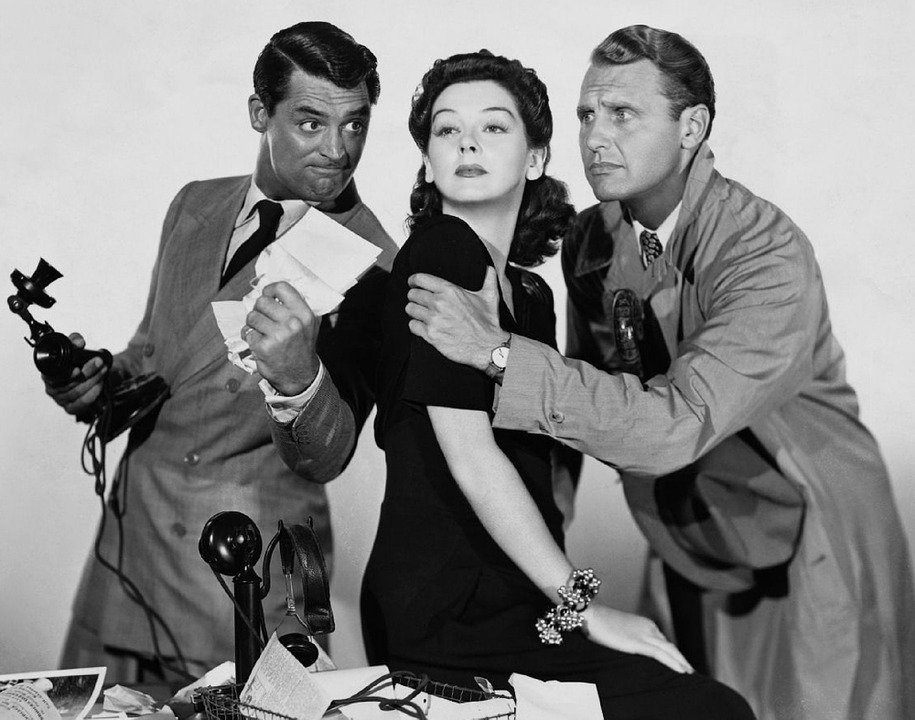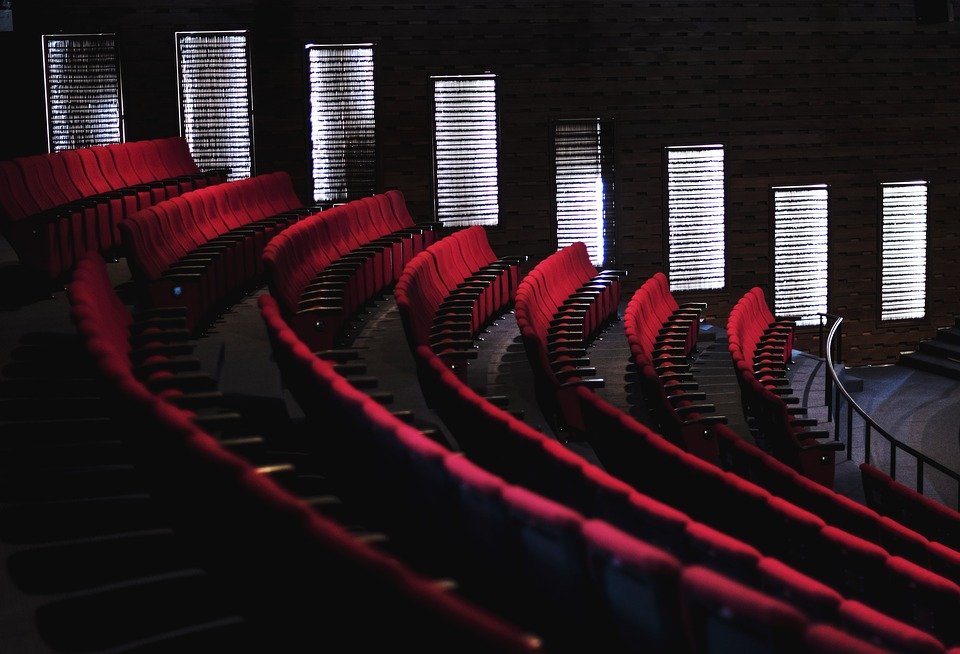Kate Harveston looks at how the youth of the present are rejecting the narratives and traditions of the past to forge the future of film.

From shopping malls to casual dining restaurants, millennials possess the power to change our cultural landscape radically. While philosophers still wrangle with the question of whether art reflects life or vice versa, those in the entertainment industry must change with the times or become obsolete.
Between ever-changing technology and longer work days, today’s generation spends their entertainment dollars carefully. They also demand a higher level of quality for their buck. On a brighter note, millennials celebrate diversity and embrace a more global mindset, leading to greater real-life equality.
The Rise of Streaming Services
Many millennials have chosen to cut the cable TV wire in favour of apps like Netflix, which offer a more extensive selection for lower monthly fees. But, streaming services offer multiple benefits besides just price.
Created as novel ways to avoid a Blockbuster run — remember those? — streaming services now develop original programming that isn’t available through cable or satellite. Many series, such as Hulu’s The Handmaid’s Tale, have gained the attention of critics and won prestigious Emmy and Golden Globe awards. Millennials appreciate the quality of the content and don’t need a laugh track to feel entertained.
Some streaming services keep prices low by requiring customers to view advertisements similar to those found on broadcast television. However, most services allow consumers to avoid seeing these ads by paying a slightly higher monthly fee. Traditional cable or satellite TV offers no such option.
As streaming services collect data about the types of programming individual viewers enjoy, they create a unique lineup of similar movies and shows customised with a personal touch. The algorithms streaming services use have grown increasingly complex. Rather than simply suggesting new horror movies to customers who recently viewed Scream, these services contain diverse subcategories that help viewers decide what to watch.
While streaming services remained in their infancy, many users would share passwords for accessing their favourite content, leading these companies to lose revenue. Nowadays, however, these services utilise artificial intelligence to identify password-sharers and require them to pay up.
They Enjoy Classic Content — When They Can Find It
Baby Boomers like to criticise today’s generation by claiming young folks don’t appreciate the value of classic movie and TV content. The reality, however, is quite the opposite. Many millennials develop a love of the oldie-but-goodies when they have access to viewing them.

As streaming services focus on providing new and rising shows and movies, they often omit classics from their content library. This puts many young people at a disadvantage when it comes to discovering older viewing content that, nevertheless, withstands the test of time.
Many millennials report feeling pressured to stretch the truth a bit when referring to classic movies like It’s a Wonderful Life. Since they fear seeming ignorant — especially given the scourging they often take from news outlets — some will say they’ve seen movie greats when, in reality, they know little outside of the title and the SparkNotes version of the plot.
Fortunately, many classic movies now fall into the public domain, meaning any millennial with a gadget capable of streaming YouTube can enjoy films like Gaslight for free. Copyright generally expires 28 years after a production’s first release, although their holders may elect to extend this period for an additional 28 for a total of 56 years. Films released without copyright notice fall immediately into the public domain.
Millennials can, likewise, access free movie content at their local library. As technology continues to advance, many millennials discover their laptops no longer contain features like DVD players, let alone their phones or tablets. However, online digital libraries now allow millennials with memberships to access classic movies from the privacy of their own homes.
They Demand More from Movie Theatres
Gone are the days when going to the movies meant necking at the drive-in. With ticket prices now costing nearly as must as a casual meal out, millennials rightfully demand a better theatre experience. Theatres wishing to remain viable need to create a higher-quality experience to keep their doors open.
Many theatres start by improving the snack bar. While traditional movie-goers chowed down on artery-clogging popcorn dripping with delicious yet high-calorie butter, today’s theatre audiences can enjoy a true dinner-and-a-movie experience all in one place.
AMC theatres now promote dine-in service replete with a table-side wait staff. Myriad smaller venues also pair gourmet meals with film-going. You can also wave goodbye to the days of smuggling in flasks to spike your soda — many theatres now offer wine and beer, and some even provide full bar service.
Millennial moms and dads often cut back on going to the movies due to the hassle and expense of finding childcare — and nothing ruins date night quite like a kicking, screaming toddler occupying the seat behind you. To solve this issue, some theatres now offer childcare services on site, while others provide the littles with comfy bean bag chairs where they can catch a nap while their parents enjoy a little R&R.
Speaking of comfort, some millennials see no point in cramming themselves into tiny theatre seats when their couches are far more relaxing. As a result, some movie houses now provide viewers with recliners and cozy sofas instead of traditional seating. While these creature comforts may lead a few attendees to slip into dreamland by scene three, the lure nevertheless gets them through the door.
Some theatres immerse viewers more fully in the movie experience by installing Universal Studios-style motion seats. Designed to make viewers feel like a part of the action, some outlets further enhance this realistic movie experience by adding wind effects and a bit of Smell-O-Vision.

3D technology has existed since the days of funky cardboard glasses with red and green lenses. However, as movie houses wish to surpass the quality many now enjoy on their home TVs, some have implemented technology to allow viewers to experience laser beams and apparitions as if they’re actually materialising among the crowd.
Gaming, Graphics and Virtual Reality
Today’s 20- to 30-somethings grew up in a world where video games always featured exciting graphics that were far more realistic than the 2D pictures used in the original Pong game. As a result, millennials view poor movie graphics with a far more critical eye than those in past generations.
The constant exposure millennials have to media has significantly shortened their attention spans. Millennials equate time with money, so much so that many would take a pay cut of $7,600 in exchange for benefits that promote work-life balance. If they’re willing to sacrifice that amount in the workplace, they certainly remain open to paying slightly more for a movie ticket to experience top-notch computer-generated imagery (CGI) that will keep them entertained.
Filmmakers today invest an enormous amount of money and resources into making more realistic flicks. Ever-improving technology has created an arms race among production companies to come up with the next best thing. Millennials benefit from this competition as movie makers continually raise the bar when it comes to innovation.
Some pop culture mavens believe the movies of tomorrow will immerse viewers using virtual reality. Many millennial gamers already enjoy the virtual reality experience, and expanding this to the cinema creates a vastly more immersive experience. Current virtual reality systems depend on specialised headsets, but as technology moves forward, less bulky options will likely emerge.
They Celebrate Diversity
When Baby Boomers reminisce about the great films of their youth, few of those films featured actors of color — unless the plot specifically called for diversity, a la Guess Who’s Coming to Dinner. Films featuring members of the LBGTQ+ community received scarce acclaim if they were released at all.
Today’s millennial moviegoers put the kibosh on institutional racism portrayed on the screen and harshly criticise movies that present cast members of minority populations in a negative light. In 2016, films featuring diverse casting often garnered more financial success than those casting predominantly white, cis and hetero actors.

Recently, the movie Black Panther landed the number three spot on the list of top-selling movies in U.S. history, surpassing even Titanic. Black actors like Denzel Washington and Morgan Freeman have proven that movies with minority protagonists not only generate millions in ticket sales, but they also gain critical acclaim. Many black actors have gone on to win Academy Awards for their on-screen accomplishments.
Members of the LGBTQ+ community have likewise achieved cinematic success in part due to open-minded millennials. We’ve come a long way from Tim Curry’s portrayal of Dr. Frank-N-Furter in The Rocky Horror Picture Show. Movies like 2018’s Love, Simon inspire young people identifying as gay or bisexual to come out to their friends and family members. Such films also remind society as a whole that all humans deserve equal respect and treatment.
Embracing diversity no longer remains the sole province of movie makers — several popular television series today also feature minority protagonists. The TV series How to Get Away With Murder features a highly educated and competent black, female law professor. Plus, the cast members of the hit Netflix series Orange Is the New Black mostly play lesbian characters.
Hollywood has long embraced diversity more quickly than other segments of the population. So, when millennials demand films that feature protagonists more like themselves, filmmakers pay attention. Including more diversity in the entertainment industry helps our cultural consciousness evolve and become more inclusive.
They Want the Girl to Save Herself
Just as millennials reject movies and programs that cast minorities in a negative light, they likewise call foul on the whole knight-in-shining-armour rot. Millennial women grew up in a world where females fought to cling to rights they earned over centuries. They know they can’t sigh coquettishly while waiting for a man to come save them — they need to become the heroes of their own life story. For this reason, both millennial men and women gravitate toward films that celebrate all things girl power.

The incredible success of Wonder Woman proved that flicks featuring a strong female lead — as well as a majority of women characters, in general — reap big money at the box office. And who can forget Uma Thurmond’s powerful female lead role in Kill Bill Vols. 1 and 2? Female-led films don’t necessarily have to feature women with superpowers or ninja skills, either, as Julia Roberts proved in Erin Brockovich.
More television series today also feature strong female characters due in large part to the demands of millennials. Lena Headey’s portrayal of Cersei Lannister in Game of Thrones shows being a bad girl and blowing up a sept or two can sometimes feel oh-so-good. Michonne of The Walking Dead fame epitomises a strong, independent female who takes absolutely no guff from anyone.
Even animated movies and films feature more strong female characters than ever before. Millennials who grew up on Disney’s Mulan learn early that cleverness and strategic ability matter more than sheer muscle mass when it comes to crushing enemies. Few babies born to millennials reach adulthood without meeting Dora the Explorer, too.
TV and movies offer women a powerful tool for bringing about greater equality for all. In the wake of the #MeToo movement, courageous female actors like Alyssa Milano have stepped forward to address the issue of sexual harassment and abuse in the entertainment industry. These actors have even brought about legislative change through their art, convincing California lawmakers to propose new measures to protect women in the movie business, particularly girls under the age of legal consent.
The Future of Film
Millennials have changed the world of cinema and television viewing permanently, and many viewers applaud these changes. Upgraded technology allows moviegoers to enjoy a more immersive experience that engages all the senses, and improved theatre features like restaurants, bars and childcare services allow many more to enjoy a date night out on the town.
The inclusion of more minority- and female-driven movies creates a societal ripple effect that leads to greater equality overall. Those in the entertainment industry hold the power to shape cultural awareness, and today’s young people influence producers to cast those of all races, sexual orientation and gender identities. By changing the movie industry in these ways, millennials are getting one step closer to making the entire world a much better place.





